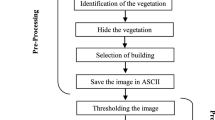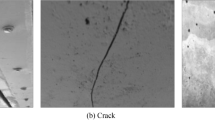Abstract
Quick damage assessment is essential for starting efficient emergency response operations following natural calamities or any other kind of disasters. After a disaster, it is crucial for rescue departments to produce judgments and distribute the resources based on a fast retrieval of precise building damage status. A ground survey is used to implement traditional building assessment, and this is labor-intensive, dangerous, and time-consuming. Studies on building damage extraction over the past few decades have generally concentrated on localizing and evaluating the destructed structures, analyzing the ratio of damaged constructions, and determining the sort of destruction each construction has sustained. Recent research trends are mainly concentrated on the utilization of data collected from multiple sensors for the damage assessments of buildings. Each stage of digital image processing can be carried out in multiple ways and several novel ideas are emerging every single day. This paper reviews the various damage assessment techniques in the different steps of digital image processing.
Access this chapter
Tax calculation will be finalised at checkout
Purchases are for personal use only
Similar content being viewed by others
References
Zhang D, Zhang Y, Li Q, Plummer T, Wang D, Li Z, Samat A, Wu L, Li J, Wu H (2019) CrowdLearn: a crowd-AI hybrid system for deep learning-based damage assessment applications. In: 2019 IEEE 39th International Conference on Distributed Computing Systems (ICDCS)
Lin C, Li Y, Liu Y, Wang X, Geng S (2021) Building damage assessment from post-hurricane imageries using unsupervised domain adaptation with enhanced feature discrimination. IEEE Trans Geosci Remote Sen, May 30
Duarte AD, Nex F, Kerle N, Vosselmana G, Satellite image classification of building damages using airborne and satellite image samples in a deep learning approach
Munawar HS, Hammad A, Ullah F, Ali TH, After the flood: a novel application of image processing and machine learning for post-flood disaster management
Perez H, Tah JHM, Mosavi A, Deep learning for detecting building defects using convolutional neural networks. Oxford Institute for Sustainable Development, School of the Built Environment, Oxford Brookes University, Oxford OX30BP, UK Correspondence
Amirkolaee HA, Arefi H (2019) CNN-based estimation of pre- and post- earthquake height models from single optical images for identification of collapsed buildings. Remote Sens Lett 10(7):679–688
Tasar O, Tarabalka Y, Giros A, Alliez P, Clerc S, Standard GAN: multi-source domain adaptation for semantic segmentation of very high resolution satellite images by data standardization
Sekrecka A, Kedzierski M, Wierzbicki D, Pre-processing of panchromatic images to improve object detection in pan sharpened images. IEEE Trans
Fu H, Zhou T, Sun C, Object-based shadow index via illumination intensity from high resolution satellite images over urban areas
Bausys R, Kazakeviciute-Januskeviciene G, Cavallaro F, Usovaite A (2020) Algorithm selection for edge detection in satellite images by neutrosophic WASPAS method. Sustainability 12:548. Received: November 29, 2019; Accepted: January 6, 2020; Published: January 10, 2020
Wang M, Tan K, Jia X, Wangand X, Chen Y, A deep Siamese network with hybrid convolutional feature extraction module for change detection-based on multi-sensor remote sensing images
Ji S, Shiqing, Lu M, A scale robust convolutional neural network for automatic building extraction from aerial and satellite imagery
Reji AAA, Sundaranar M (2019) Building detection from satellite images for urban planning using MATLAB-based pattern matching method. Int J Creative Interf Comp Graph 10(2), July–December
Schuegraf P, Bittner K (2019) Automatic building footprint extraction from multi-resolution remote sensing images using a hybrid FCN. Int J Geo-Info. Received: February 26, 2019; Accepted: April 6, 2019; Published: April 12, 2019
Muruganantham S (2019) Efficient deep feature selection for remote sensing image recognition with fused deep learning architectures Fatih Özyurt. Springer Science+Business Media, LLC, part of Springer Nature
Tubishat M, Idris N, Shuibb L, Abushariahc MAM, Mirjalilid S, Improved salp swarm algorithm based on opposition based learning and novel local search algorithm for feature selection
Hamedianfar A, Gibril MBA, Hosseinpoor M, Pellikka PKE, Synergistic use of particle swarm optimization, artificial neural network, and extreme gradient boosting algorithms for urban LULC mapping from WorldView-3 images
Bosch M, Foster K, Christie G, Wang S, Hager GD, Brown M (2019) Semantic stereo for incidental satellite images. In: 2019 IEEE Winter Conference on Applications of Computer Vision
Xin M, Wang Y (2019) Research on image classification model based on deep convolution neural network. EURASIP J Image Video Process 40
Neelima M, Krishna MM (2018) Image classification using deep learning. Int J Eng Tech 7(2.7):614
Patil A (2021) Image recognition using machine learning, February 1, 2021, available in SSRN
Sekrecka A, Kedzierski M (2019) Preprocessing of panchromatic images to improve, object detection in pansharpened images. Sensors 19:5146
Cao K, Zhang X (2020) An improved Res-UNet model for tree species classification using airborne high-resolution images. Remote sensing Published: April 2, 2020
Author information
Authors and Affiliations
Corresponding author
Editor information
Editors and Affiliations
Rights and permissions
Copyright information
© 2023 The Author(s), under exclusive license to Springer Nature Singapore Pte Ltd.
About this paper
Cite this paper
Sajitha, I., Sambandam, R.K., John, S.P. (2023). Review on Image Processing-Based Building Damage Assessment Techniques. In: Swaroop, A., Kansal, V., Fortino, G., Hassanien, A.E. (eds) Proceedings of Fourth Doctoral Symposium on Computational Intelligence . DoSCI 2023. Lecture Notes in Networks and Systems, vol 726. Springer, Singapore. https://doi.org/10.1007/978-981-99-3716-5_69
Download citation
DOI: https://doi.org/10.1007/978-981-99-3716-5_69
Published:
Publisher Name: Springer, Singapore
Print ISBN: 978-981-99-3715-8
Online ISBN: 978-981-99-3716-5
eBook Packages: Intelligent Technologies and RoboticsIntelligent Technologies and Robotics (R0)




